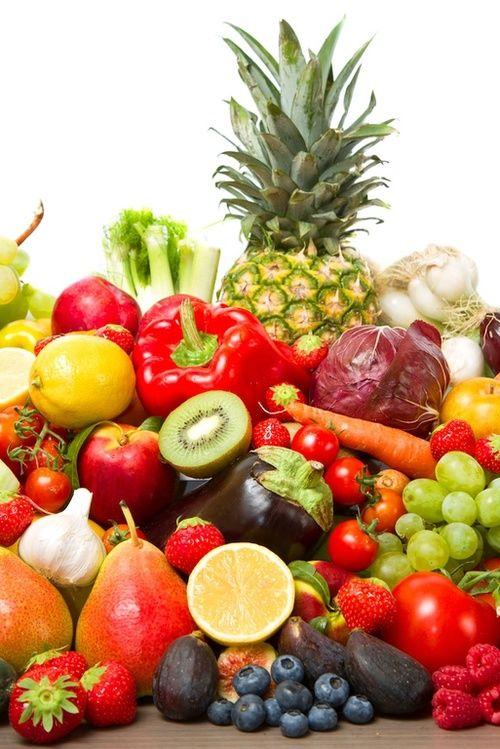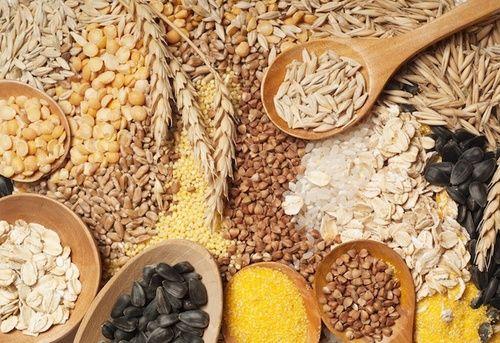- foods of plant origin contain compounds bioactive which reduce the risk of developing chronic diseases and are able to prevent the onset of many types of cancer. Let's split them up better.
> 2. The bioactive compounds of plant foods

Why choose plant foods
Modern society is increasingly oriented towards a sedentary lifestyle in which an often excessive diet is associated with little movement, thus leading to an increase in obesity and associated diseases.
Healthy nutrition, regarded as a means to preserve the state of health of our body, requires the intake of multiple quantities of foods of plant origin and a limited intake of fats and salt. Epidemiological studies carried out on humans indicate that a high intake of calories is associated with the risk of encountering numerous chronic diseases, while a diet rich in products of plant origin, such as cereals, fruit and vegetables and low in fat plays a role of protection.
Some are naturally present in foods of plant origin bioactive compounds, that is, molecules with or without nutritional value, endowed with biological activity which manifests itself in reducing the risk of developing numerous chronic diseases, thus carrying out a fundamental protective action on our health.
Within this group of compounds are inserted antioxidants, defined as substances capable of delaying or preventing the oxidation of some molecules.
The importance of the antioxidants contained in food is to be associated both with the ability to preserve the conservation status of food, delaying the oxidation of polyunsaturated fatty acids present in the food itself, and to exert beneficial effects in the human organism against chronic-degenerative diseases induced by oxidative stress and age.
The bioactive compounds of plant foods
The bioavailability of phytochemicals can be influenced by factors intrinsic to the food (environmental conditions such as seasons, territorial differences, etc. e methods of cultivation and conservation suffered by foods of plant origin, both domestic and industrial) and by factors intrinsic to the human organism (the compounds are generally poorly absorbed, widely metabolized and rapidly eliminated).
For these reasons it is recommended that their assumption is constant over the tempo so that the blood concentrations of the related metabolites remain high and that the beneficial effects exerted by these substances on health are ensured.
The bioactive compounds, present in foods of plant origin, include an extremely inhomogeneous set of substances united by the fact of being peculiar to the plant kingdom, not being synthesized by man, not being indispensable, often having a protective action on human health if taken at high levels significant and have complementary and overlapping mechanisms of action.
Among these compounds we find some vitamins (vitamin E, vitamin C), mineral salts (zinc and selenium), antioxidants, phytoestrogens, dietary fibers, flavonoids, isoflavones, etc.
You can learn more about the benefits of dietary fiber

I flavonoids, more than 5000 compounds, possess biochemical properties of functional interest in the nutritional and therapeutic field; to cite a few examples, the flavonoids of ginkgo biloba, hawthorn and red vine are the main components of many herbal extracts; quercetin in tea, kaempferol in broccoli and cabbage, mericitin in grapes and blueberries are just some of the many flavonoids found in foods.
Flavonoids have been shown to play an important role in cardioprotection and play a protective role against aging-related decline in cognitive function.
I phytoestrogens, identified in over 300 plants of which only a few are edible (in high concentrations in soy and in lower quantities in many types of fruit, vegetables and whole grains), they have estrogenic hormonal properties.
They are phytoestrogens precursors of the active forms which, after their ingestion, must be metabolized and activated by the intestinal bacterial flora to be absorbed and be biologically active.
- isoflavoni, they have beneficial effects especially in cardiovascular pathologies, hypercholestorolemia, premenstrual syndrome, menopause and osteoporosis. I am particularly represented in soy and all its derivatives such as flour, sauces, oil, milk and cheese but also in other legumes such as lentils, beans, peas, broad beans, chickpeas and whole grains such as wheat, rice, barley, rye and oats,
These substances, in addition to having the functions described, could influence the risk of onset of some forms of cancer mainly thanks to their antioxidant activity, stimulating the immune system, modulating enzymatic activities, influencing cell differentiation processes and hormonal metabolisms.
Plant foods, allies of
In addition to the above, numerous scientific studies have shown that a diet rich in plant-based foods is able to prevent the onset of many types of cancer. This is because a diet based mainly on the consumption of plant foods is characterized by a high intake of fiber and micronutrients and a reduced energy density.
Le fibers they are the residues of the edible fraction of vegetables that resist digestion and absorption in the small intestine and that undergo partial or total fermentation in the colon.
According to the type of fiber, two mechanisms of action come into play: insoluble fibers by absorbing water increase the weight of the faeces favoring peristalsis by limiting the intestinal transit time, reducing the concentration of potentially carcinogenic substances and their residence time in contact with the intestinal mucosa, while the soluble fibers form a gel on the intestinal wall that favors the descent of the faeces and also ferments in the colon producing short-chain fatty acids (butyrate, propionate and acetate) which have numerous beneficial effects on the body; butyrate in particular is able to directly modulate cell replication and differentiation, thus stopping the processes of carcinogenesis.
Another important feature of vegetables to take into consideration is that they represent an excellent one source of water since this ranges from 85 to 95% of the weight (except for corn and peas, whose water concentration is about 75%). A consumption of 300 g of vegetables per day is equivalent to an intake of 270 ml of water, equal to 27% of food intake, excluding drinks.
This particularity makes vegetables particularly poor foods from a point of view energy value (calories provided). The latter essentially derives from the few carbohydrates present in the food and represents between 15 and 60 kcal per 100 g, in other words from 50 to 200 kcal per day for 300 g of vegetables consumed.
READ MORE
Plant foods among the ingredients for beautiful and healthy hair


























